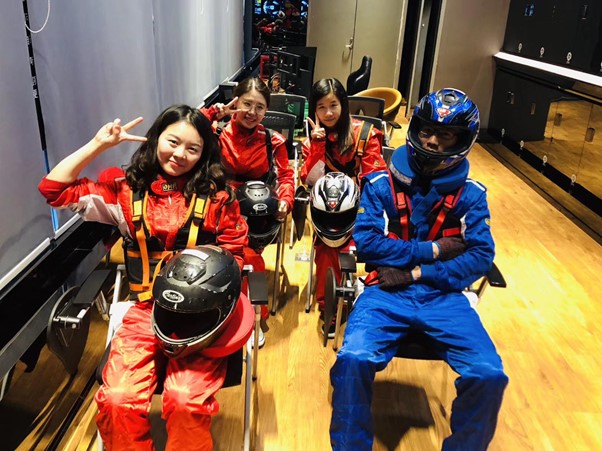The engineering field has historically been, and continues to be, a male-dominated field – and with this reality comes a unique set of obstacles for female engineers looking to break into it. Over the course of history, however, we have seen trail-blazing women succeed, thrive and pioneer breakthrough technologies despite the odds.
Ada Lovelace, a member of the British aristocracy, is widely considered the world’s first programmer. In the early 1800s, she collaborated with mathematician Charles Babbage on an early computer called the Analytical Engine, writing an algorithm for performing calculations.
In 1903, Mary Anderson invented the world’s first windshield wiper – and 15 years later, another woman, Charlotte Bridgwood, built upon this innovation with the first automatic windshield wiper.
In the 1930s and 40s, Hedy Lamarr developed the ‘frequency hopping’ technology, which enabled remote control of weapons and devices for the U.S. Military during World War II. It’s this same technology that underpins the ubiquitous wireless communication we all rely on today. These are just a few of the women engineers who have left their mark on history.
As in the past, there are still far more men in the world of modern engineers, but fewer numbers don’t necessarily mean less impact. And as these numbers continue to grow, we will certainly continue to see bigger, better breakthroughs from women around the world who are designing semiconductors, developing AI technology and setting up the network system.
In commemoration of the International Women in Engineering Day on June 23, we spoke to the next generation of female engineers of SK hynix in Korea, the U.S., China and Belarus who are shaping the future of the industry from the inside out.

Lee Min Hye, Physical Design Manager (Korea)
Her proudest accomplishment: “A patent I wrote in 2017 has been registered with the US Patent and Trademark Office. And the product that I designed was applied to other products and became the company’s layout design standard.”
Her advice to younger female engineers: “I would definitely recommend this job to my younger family members. The culture at SK hynix is comfortable and family-like. It’s not difficult to adapt, and I don’t think there’s anything that is made more difficult because I’m a woman. Rather, it is thought that the meticulousness and persistence of women will contribute to the development of the company.”
Her take on female representation in the industry: “Since the proportion of women in engineering colleges is small, I think the same is true in the company. During the project period, overtime is frequent, and I think that many female seniors leave the company because it is difficult to take care of childcare during that time…”

Rae Lee, Systems Engineering Manager (United States)
Her path to engineering: “My parents encouraged me to explore everything when I was a kid. So, although I was a girl, I had many science toys – and I believe that made me think that science was fun. After I graduated from college, my first job gave me the chance to help my boss to set up the network system for the entire company, which brought me into the computer world, and helped me find my interest in computers.”
Her case for engineering jobs: “First of all, job security. Engineering jobs are not likely to be eliminated by automation, because automation needs engineers to develop and test. Secondly, the compensation. Engineering jobs are paid the highest average starting salary. According to the U.S. Bureau of Labor Statistics (BLS) engineers have a median annual wage of $91,010 (in 2021) and the engineering field projects to have employment growth of nearly 140,000 new jobs over the next decade. Thirdly, the sense of accomplishment. Engineering jobs are challenging but they also bring you the sense of accomplishment.”
Her take on female representation in the industry: “The best thing we can is to pay women equally and put more women in prominent leadership positions. It sends a message to younger women pursuing careers in engineering that they can advance and have a successful future.”

Maryia Smouzh, FA Tools Team Lead (Belarus)
Her path to engineering: “Everything happens by accident. It’s all fate and chance in life. As a child, I was curious what was inside devices what would happen if I changed something. I would try this while my parents weren’t looking! At university, I studied math with no idea what to do after graduation since there wasn’t much choice at that time. So, I let life just guide me here.”
Her inspiration: “The result of the work and how it benefits people. While I can’t say I have one specific role model or hero, I get inspired by the biographies of people who followed their dreams – both in the tech world and beyond.”
Her take on female representation in the industry: “Women are underrepresented in many spheres, not just the tech industry. I think it takes its roots in the early ages – for example, the stereotypes that girls should only play with dolls, and that boys are better in math and science. It can discourage a girl from studying STEM subjects and results in a gender-biased pool of specialists… However, I do believe that the situation is changing towards more diversity in the tech sphere.”

Guangqin on the front left
Guangqin Yin, Production Engineer (China)
Her favorite part of the work: “When encountering a special emergency, all departments are responsible for dealing actively with the problems and need to have a flexible response. It’s great to strive for the same goal, with each team member’s united effort!”
Her role model: “My former boss Director Li Xiangche is my role model. His passion in work is much deeper than we think. In the early stage of mass production, he was always the last to work, and occasionally he called to the production line to confirm the operation of the production at two or three in the middle of the night. Li worked with strict discipline. After work, he was a friendly uncle. He often spoke Chinese too. He was a semiconductor man who loved life very much.”
Her take on female representation in the industry: “I think family factors and work intensity may be the factors for female engineers to leave the semiconductor industry. Nevertheless, I believe that there will be more and more women in the semiconductor industry. After all, women are not inferior to men, and women can hold up half of the sky!”








